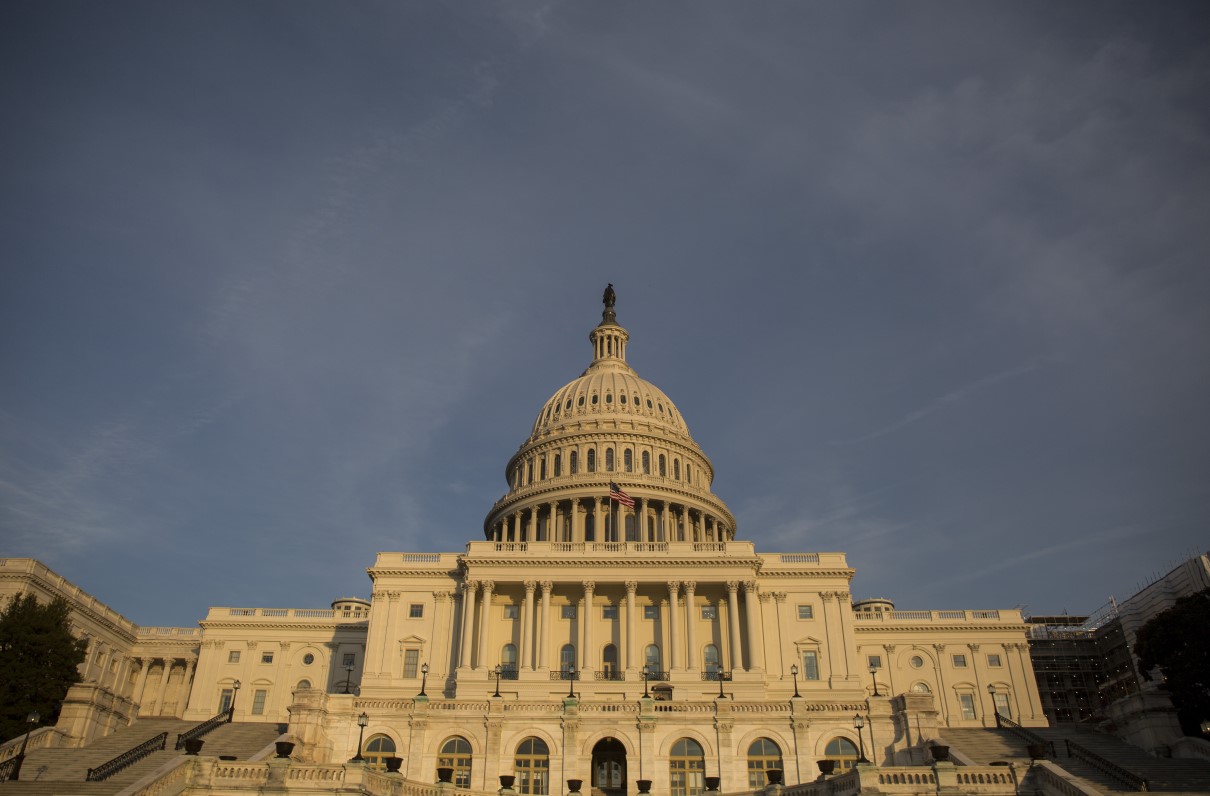This September, Congress likely will do something it’s done frequently that damages military planning and readiness, puts your benefits in danger, and wastes billions of dollars -- pass a Continuing Resolution (CR) in lieu of passing a budget.
In this election cycle, the budget is part of the gamble over which political party will be in power next spring, making it difficult for any compromise until after elections. The painful impact of a CR on our uniformed servicemembers and their families, as well as the retiree, survivor, and veteran communities, fails to resonate with many lawmakers.
[TAKE ACTION: Urge Your Lawmakers to Pass the Budget on Time]
Annually, service secretaries and chiefs convey in their testimony to Congress the magnitude of waste and disruption that occurs from a CR. Secretary of Defense Mark Esper said in 2019 that the prior budget cycle’s CR cost DoD $19 billion.
Here’s why and how the CR does so much damage:
“Divest to Invest.” A CR puts a hold on new programs, while old programs scheduled to terminate limp along under last year’s funding levels. It sidelines plans in the FY 2021 budget that would match a national security strategy focused on modernization and ending outdated legacy systems. It delays critical reforms and oversight measures.
A significant benchmark for the 2021 DoD budget is the largest initiative in Research Development Testing and Evaluation in history. The budget also funds the nascent Space Force, which will be extremely hampered by a CR because most of its programs are new.
These actions prevent DoD from acting on its plans and putting its money where it does the most good. As Joint Chiefs Chairman Gen. Mark Milley, USA, told the House Armed Services Committee in a February hearing, “We have to divest to invest” to meet the nation’s threats.
Eroded Infrastructure. The impact of a CR is heightened by what Milley has described as “20 years of deferred maintenance” during the wars in Iraq and Afghanistan. There is a noticeable exodus from installations where servicemembers do not want to live near post, and retirees find less and less of a reason to visit medical facilities, services are reduced and infrastructure crumbles.
[TAKE ACTION: Join MOAA’s Summer Storm to Protect the Military Health Care Benefit]
Some installations have disturbing indicators of erosion manifested by increased misconduct, fatal accidents, and suicide. It’s unclear how many of these issues could be addressed through better and smarter programs, but it’s certain that under a CR, officials will have less flexibility in their work to improve their installations.
An approved budget also is required to fund oversight of the disastrous privatized housing program. Currently, four significant provisions in the tenant bill of rights have yet to be implemented, leaving significant work to correct a long history of oversight problems. Many of the inspectors for privatized housing (and those from the global household goods contract) will come from the operations and maintenance funds at DoD and will be seriously impacted by a CR.
Threatened Family Programs. When budgets are tight, military family support programs are vulnerable to cuts. It is hard for DoD to preserve family support programs, make infrastructure plans for child care needs, and maintain oversight of housing and PCS moves when they are searching for change under the couch cushions so to speak. Programs to improve badly needed child care programs, child development center construction, and emplace inspectors for the global household goods contract will also be impacted.
The cost of delaying these improvements will hit military families now and in the future as costs pile up during and after a CR.
[RELATED: More Spouse and Family News From MOAA]
Problems Beyond DoD. Failed CRs result in government shutdowns. The last shutdown left the Coast Guard and members of the National Oceanic and Atmospheric Administration (NOAA) Commissioned Corps without pay well into January 2019, and caused disruptions for many U.S. Public Health Service Commissioned Corps members, as well.
As one senior Coast Guard official explained to MOAA, the impact goes far beyond servicemember pay: “Sustaining a ready Coast Guard requires regular, predictable funding in the form of enacted appropriations at the start of each fiscal year. The Coast Guard has operated under 36 Continuing Resolutions since FY 2010, totaling over 1,500 days (roughly 40 percent of each fiscal year). Just like the other Armed Services, CRs impact the readiness of Coast Guard forces at a time when security threats are extraordinarily high.”
[RELATED: MOAA Asks Congress to Support Coast Guard Authorization Act]
A Simple Schedule
How the budget process is supposed to work.
- February: The president outlines White House priorities in the State of the Union address.
- First Monday in February: This is the “due date” for the administration to submit its budget request to Congress, but the releases vary from on-time through April.
- Mid-March: Congressional committees submit their “views and estimates” to the House and Senate Budget Committees in response to the administration’s request. Committee leaders indicate their preferences on budget matters for which they’re responsible.
- April 15: Congress passes a budget resolution, committing itself to broad spending levels.
- May to July: Congressional committees hold hearings and work on their budgets for the upcoming fiscal year.
- August: Recess.
- Sept. 30: Congress completes its work on appropriations bills for the upcoming year.
In 2019, the CR passed on Sept. 26 and lasted until Nov. 21. For 2021, it is possible that a budget may not be passed until March and complicate the 2022 appropriations cycle.
Although COVID-19 and stimulus bills disrupted the schedule, the House still proceeded on the majority of its appropriations bills, passing 10 of the 12 spending packages before the August recess. However, it is unclear when the Senate will take up these bills for consideration.
Why Does Congress Continue to Revert to CRs?
Some congressional staffers believe CRs continue because DoD will provide security to our nation no matter what. Budget officers are getting used to CRs and prioritizing existing funds.
When asked why it was difficult to communicate the CR impact on national security to Congress, a senior official from the Pentagon budget office put it simply: “I am not allowed to say that I do not have enough money to defend our nation.”
Military experience among members of Congress has fallen significantly over the last 30 years, according to data assembled by the Pew Research Center, Military Times, and others, making it more difficult to communicate the impact of budget instability. Another problem: Fewer than 2% of congressional staffers are veterans, per a January 2019 Military Times report; as one staffer put it in the article, “There’s a fundamental lack of knowledge in Congress in regards to what these benefits mean and what it’s like to serve in the military.”
Make Your Voice Heard
Reach out to your legislators and let them know our servicemembers and taxpayers deserve a budget delivered on time. Now more than ever, your elected officials need to hear your voice.
MOAA Knows Why You Serve
We understand the needs and concerns of military families – and we’re here to help you meet life’s challenges along the way. Join MOAA now and get the support you need.

